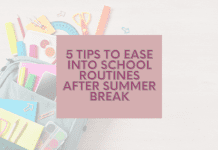Guest Post By: Beverly Nichols
As the principal of Queen Creek Junior High School, I bring a unique perspective on what it takes for students to transition from elementary school to junior high.
This upcoming school year will mark 20 years for me serving students in the Queen Creek Unified School District. I started as a teacher at Jack Barnes Elementary and then transitioned to Queen Creek Junior High, where I taught both science and social studies, and moved on to become an assistant principal and athletic director.
Now, I am entering my second year as its proud principal, gearing up to greet more than 550 students for the first day later this month. As both a parent and a principal, I’ve learned there are a few things we can do to ensure a smooth transition for our incoming junior high students:
Be Patient.
Understand that students will struggle in the first quarter. Moving from one teacher to several teachers can be a traumatic experience, so be patient with your child and provide the emotional support they need during this change.
Organization is Key.
If they have an agenda or planner from school, encourage them to consistently use it. If your school does not provide one, consider buying your child one and teaching them how to use it.
Keeping up with several classes can be daunting at first. Assist your child in being organized the night before so they don’t forget anything. Read the syllabi for all classes so that you understand the expectations for your child.
Communicate, Communicate, Communicate.
Include your child in all communication so they become comfortable speaking to their teachers and they understand you are all on the same page (looking out for the best interest of the student).
Teach them self advocacy strategies. For example, if your student is sending an email to a teacher, show them how to cc you as a parent. This keeps you in the loop as well as encourages your child to show individual responsibility.
While the transition from elementary to junior high may seem like it happens overnight, your child is still the same child they were yesterday and the day before.
Pack notes of encouragement in their backpacks or lunches the first couple of weeks. Give them grace to make mistakes. They may be in junior high, but they still need you.












